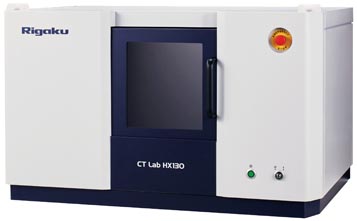GRANITE PHASE FRACTION ANALYSIS
About the sample: Granite
Granite is a coarse-grained igneous rock and is often used as a countertop material. Granites often include various minerals, such as quartz, alkali feldspar, and plagioclase, in different colors. Different minerals often have different densities and can be distinguished in X-ray CT (computed tomography) images. By segmenting the X-ray CT images, phase fraction or shapes and sizes of inclusions can be analyzed.
Analysis procedure
- In this example, a piece of granite was scanned using a micro-CT scanner, CT Lab HX.
- The CT image was segmented into five phases using the machine learning segmentation technique.
- The phase volume fraction was calculated and one of the inclusions was converted into a surface mesh.
1. CT scan
A roughly one inch size piece of granite was scanned to produce the 3D grayscale CT image.
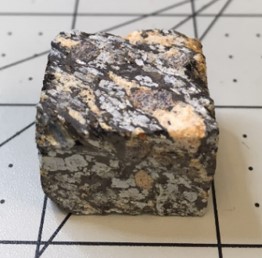
2. Image segmentation
The gray level in CT data (left) represents the relative density. Five different gray levels are recognized and segmented using the machine learning segmentation technique (right).
Although the contrasts among the five phases are high, machine learning provides more accurate segmentation than gray-level thresholding. There are mid-tone voxels at the interface of the two phases due to the partial volume effect. Those mid-tone voxels can be wrongly labeled when gray-level thresholding is used. Machine learning can avoid this problem.
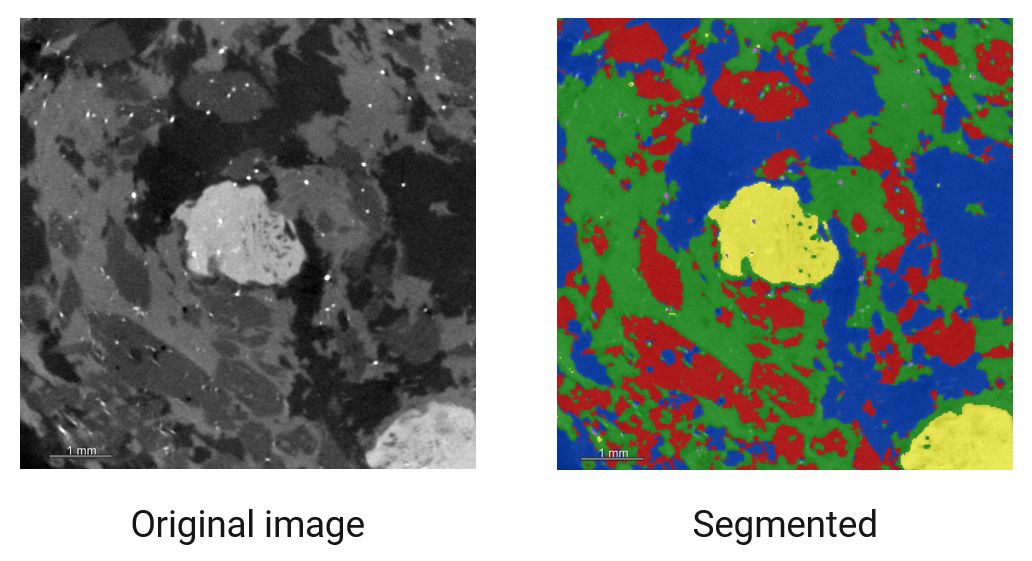
3. Phase fraction calculation and surface inclusion analysis
From the segmentation results, the volume fraction of each phase was calculated as follows (from the lowest to the highest densities):
- Phase 1: 28.49 vol%
- Phase 2: 24.13 vol%
- Phase 3: 39.94 vol%
- Phase 4: 7.29 vol%
- Phase 5: 0.15 vol%
Phase 4 is the inclusion colored yellow. One of the inclusions was converted from the pixel-based segmentation to a surface mesh, which is more suitable to represent the shape of the inclusion.
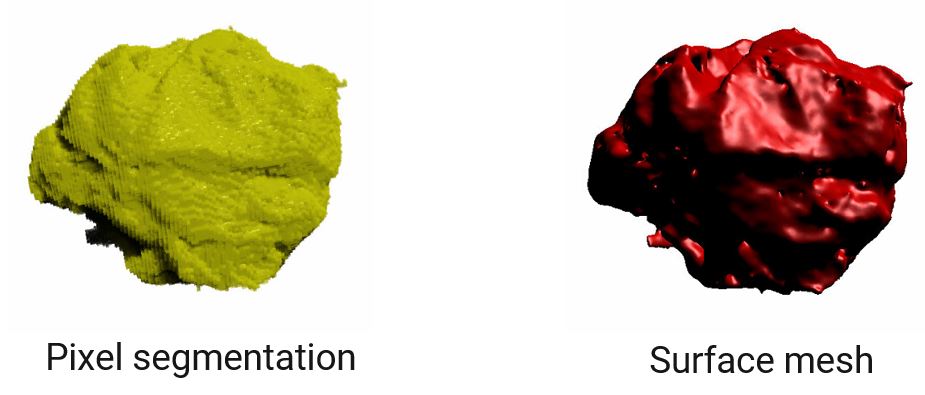
More Geological Application Examples
Watch an on-demand webinar about X-ray CT geological applications.
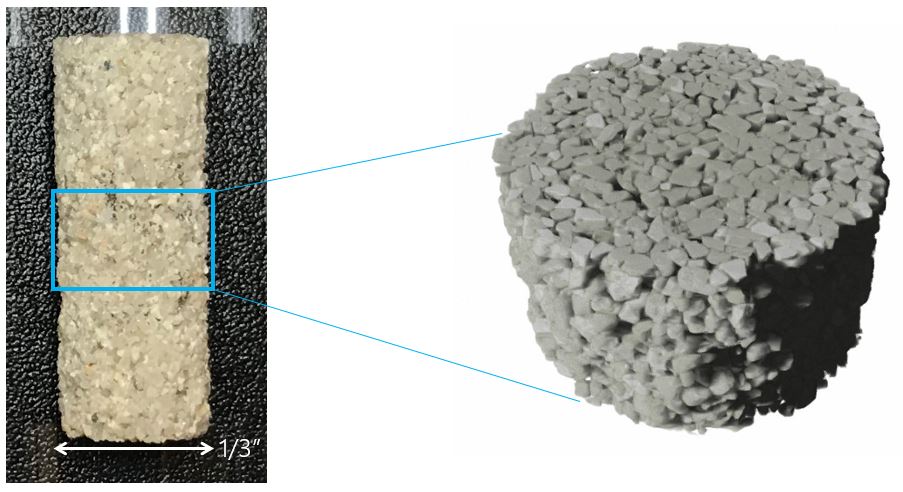
Sandstone grain size analysis
Application Note
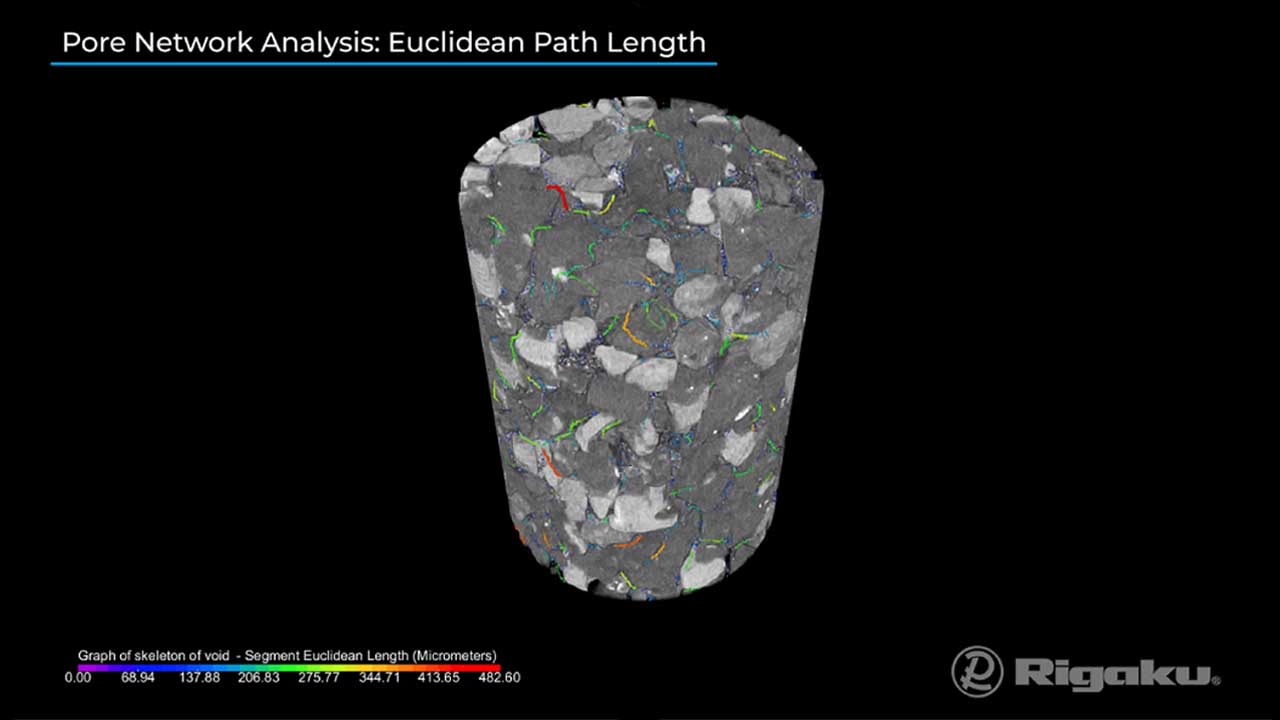
Sandstone pore network analysis
Application Note & Video
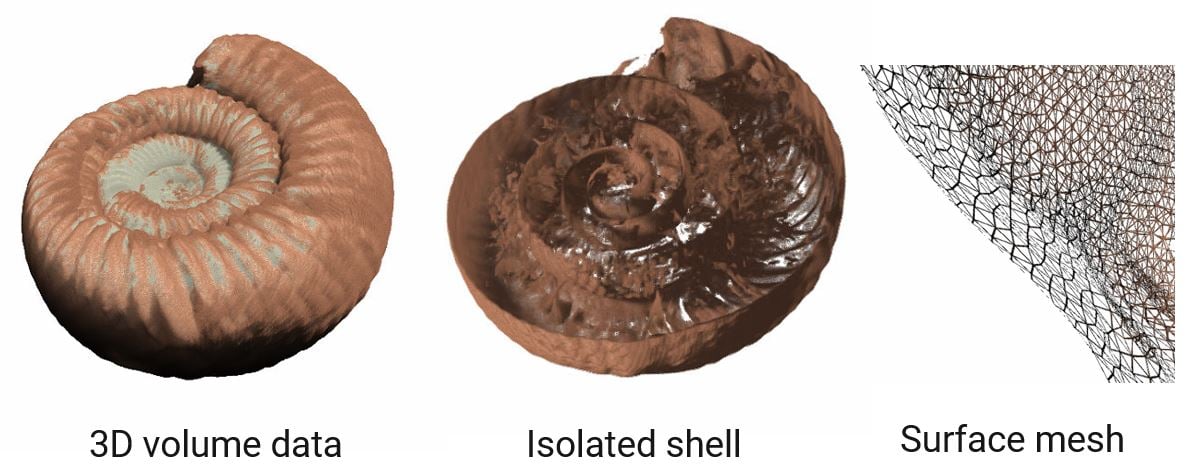
Ammonite fossil scan
Application Note

Carbonate porosity analysis segmentation comparison
Application Note
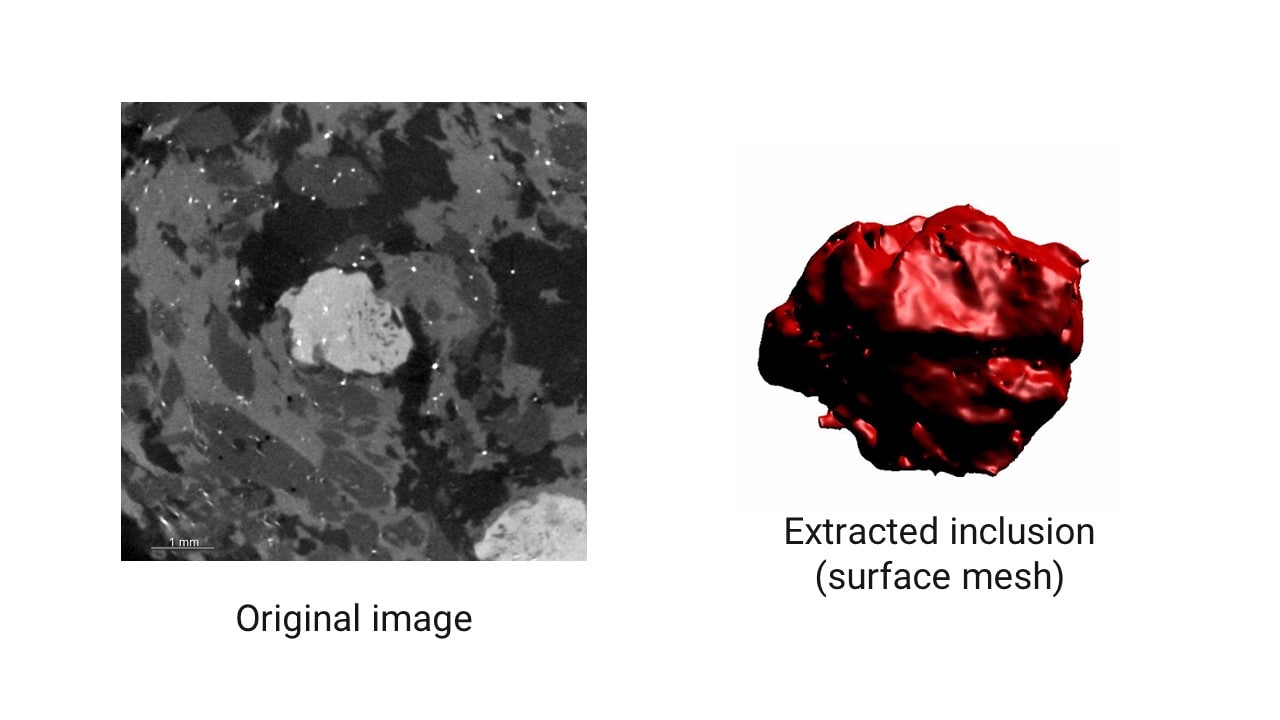
Granite phase fraction analysis
Application Note
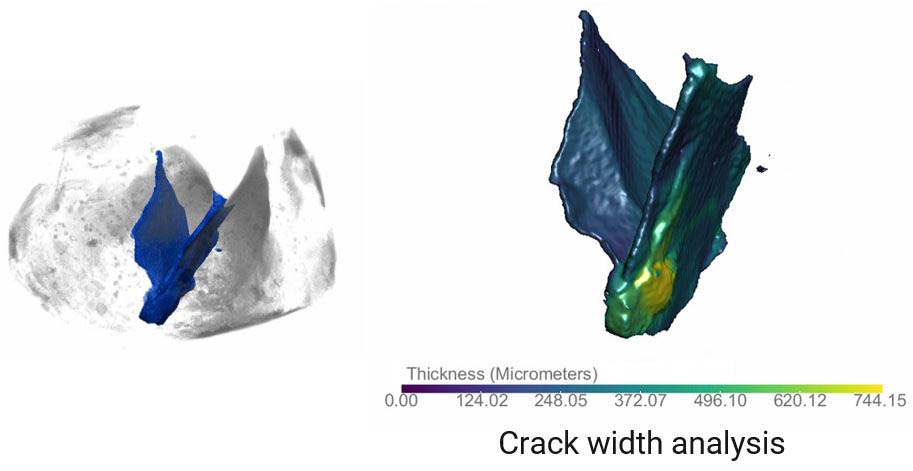
Rock crack analysis
Application Note
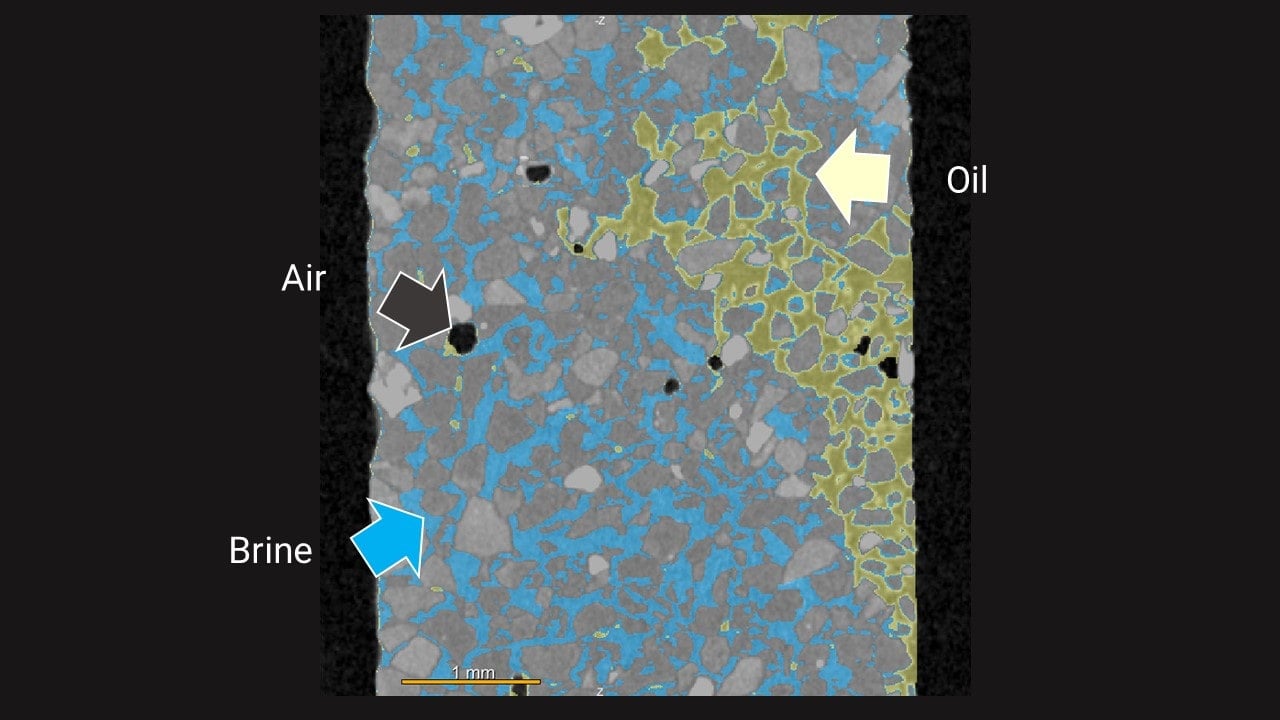
Sand oil and brine segmentation
Application Note
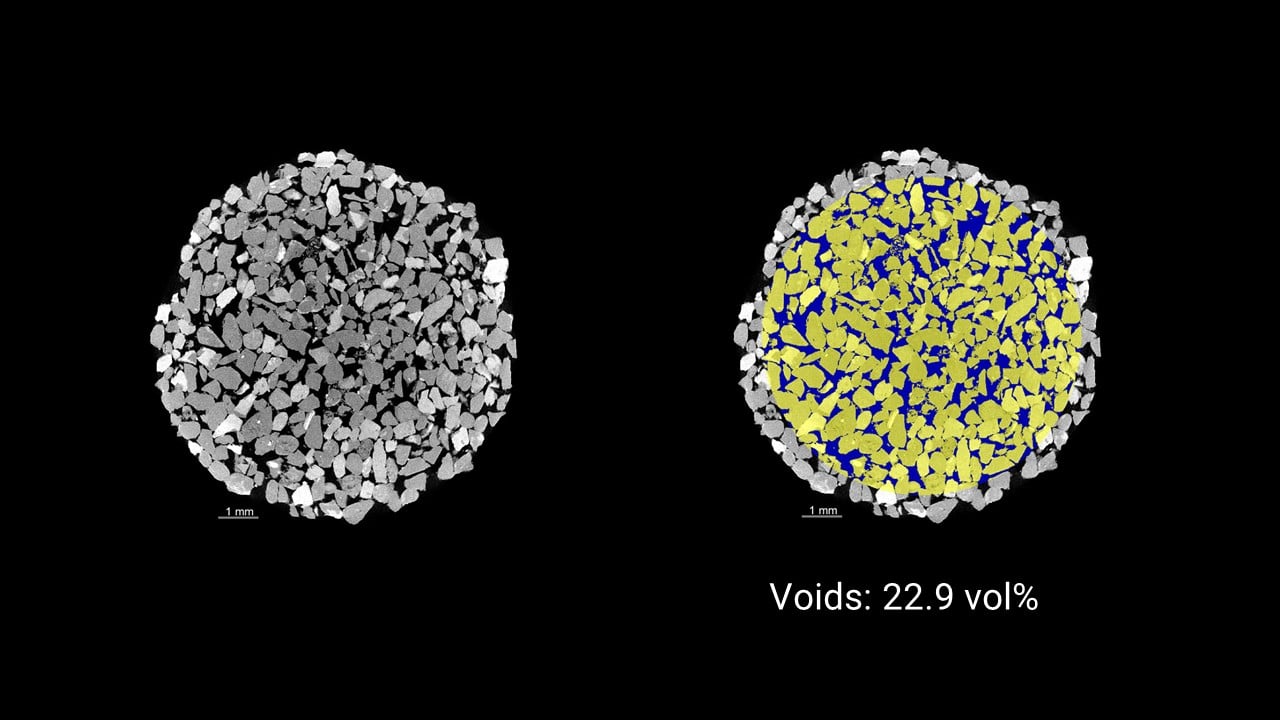
Sandstone porosity comparison
Application Note


